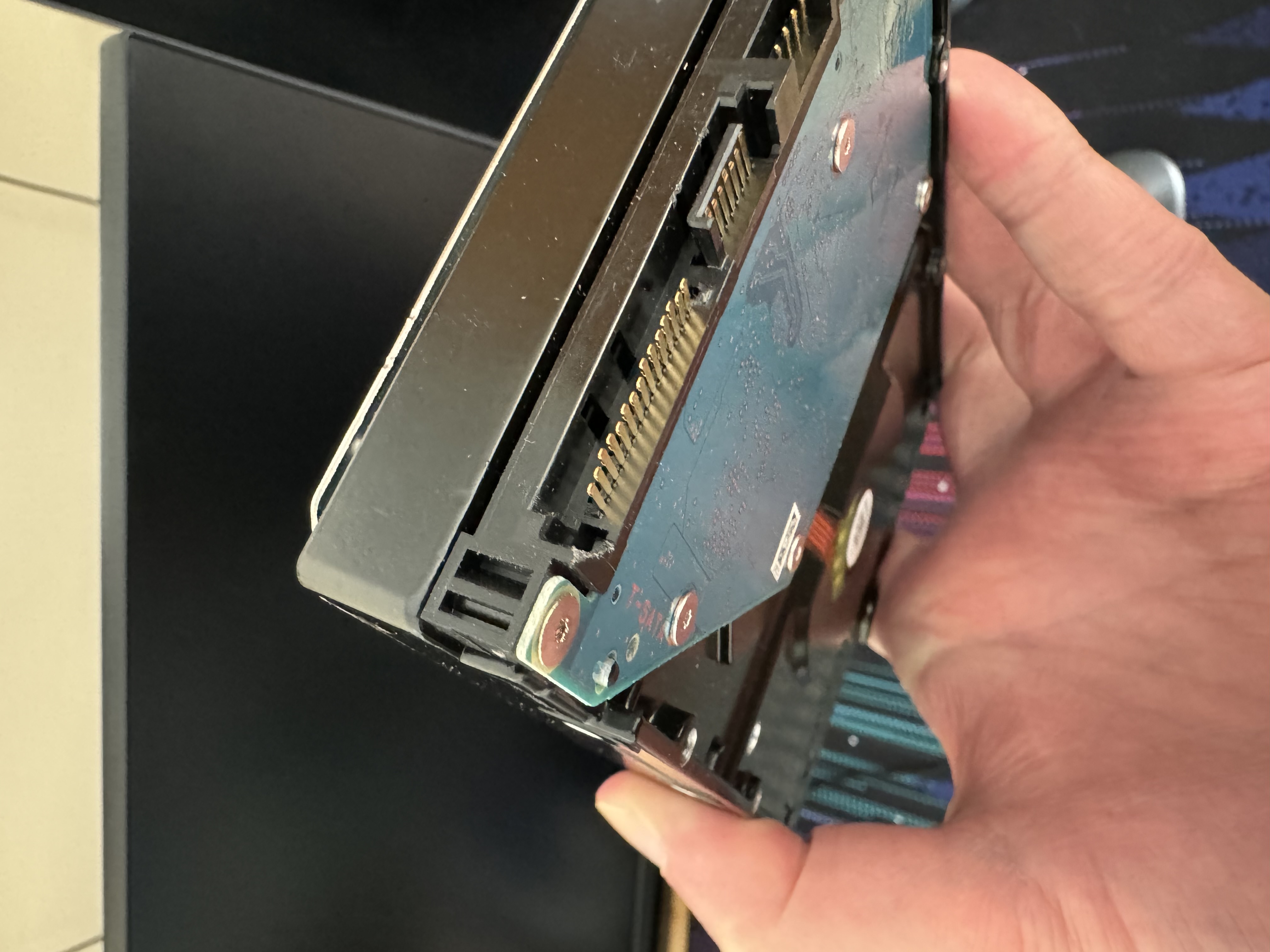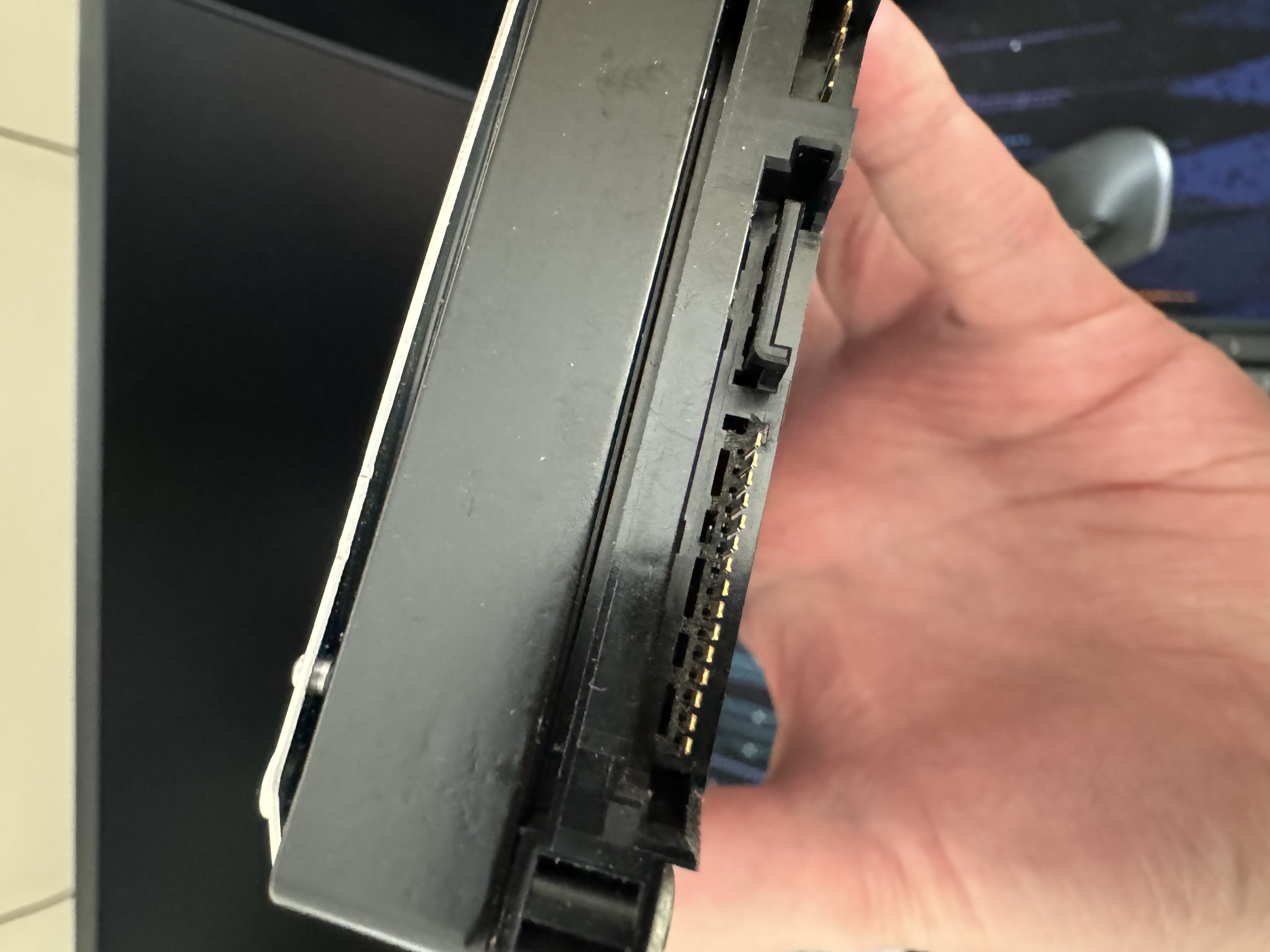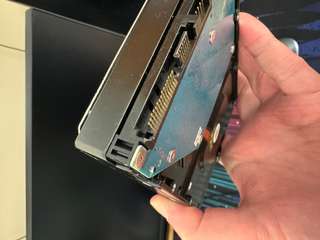
Oh dear, I broke a hard drive
My Unraid home server has, for the longest time, been a hodge-podge of old hard drives that I've combined to make my array. I started off with a 1TB, 2TB and 4TB drive in the array, salvaged from old PCs and consoles and put to work storing my data.
About eighteen months ago I embarked on a plan to upgrade the whole setup, replacing the drives one-by-one with 16TB NAS-grade drives and also adding a 16TB parity to act as a first line of defence against data loss and keep the server running when a hard drive dies.
Each 16TB drive was about £260 to £300 each depending on hard drive prices at the time, and I'd worked my way through replacing the 1TB and 2TB drives (and gainfully recycling them into other uses in other devices) and decided that I'd keep the 4TB drive going in the server until it died.
In a rather ironic twist, the first drive to die was my 16TB parity drive (the only one I bought from Amazon, which arrived in dubious packaging), and was thankfully replaced under warranty.
However, its replacement has been put to the test, largely as a result of my stupidity and not because the 4TB hard drive (which I bought for a gaming PC in 2017) was on its way out.
You see, I had a spare RTX 3080 Founders Edition. It was originally recycled from my current gaming PC into a Linux box as some sort of game streaming server (more on that another time), but since Nvidia drivers for Linux are notoriously terrible I opted to use an AMD RX 7800 XT for my game streaming server, and decided those CUDA cores in the RTX 3080 could be put to use in AI tasks and transcoding for Plex.
I popped the card into my server, housed in a Fractal Design Node 304 case, and closed it up. Now, for those of you who understand thermodynamics, or just how air flows through a PC case, you're probably already cringing!
For those of you who don't know what I'm talking about, let's put it this way: the case got hot, very, very quickly.
Drives went up to 50C, and my 512gb cache drive went past 70 C after about 10 hours.
I'd already had to make a few modifications inside to fit the graphics card, including removing one of the dual hard drive bays (my home server only has 4 drives in it anyway), and after getting a whole bunch of red warning notifications I decided to remove the GPU and get a bigger case before putting it back in.
As part of that, I returned the dual drive bay I'd removed and decided to shuffle the drives around, giving them a bit more space. Only I'd forgotten to unplug the SATA power connector from the drive.
Crack.
Oh no.
I looked at the drive in the bay, and the entire plastic grip/socket for the power cable had been removed, and some of the pins were bent.

At first, I wasn't sure if it was the 4TB that I'd busted or one of my precious 16TB drives, and pulling it out I breathed a sigh of relief that it was the one drive I was going to replace anyway.
I ordered a new 16TB drive (at a cost of £280) for next day delivery and my parity drive has been doing the heavy lifting for the missing 4TB since.
The new drive is now in the server, and I'm preclearing it before I put it to work.

I've been building PCs for myself and friends for about 20 years at this point (possibly more) and this is the first time I've ever broken something so thoroughly that I can't use it anymore.
I sure hope it's the last time, too.
Now that all 3 original drives have been replaced, and I'll soon have a case that can support bigger Micro-ATX motherboards (rather than the Node 304's Mini-ITX limitation), I can start looking at adding another 2 drives (or potentially more) once my current gaming PC gets recycled into the server.
As for what I'll be using that storage for, probably media and a few services. But I might cover what the server does in another post.





